7 Steps On How to Tan a Hide
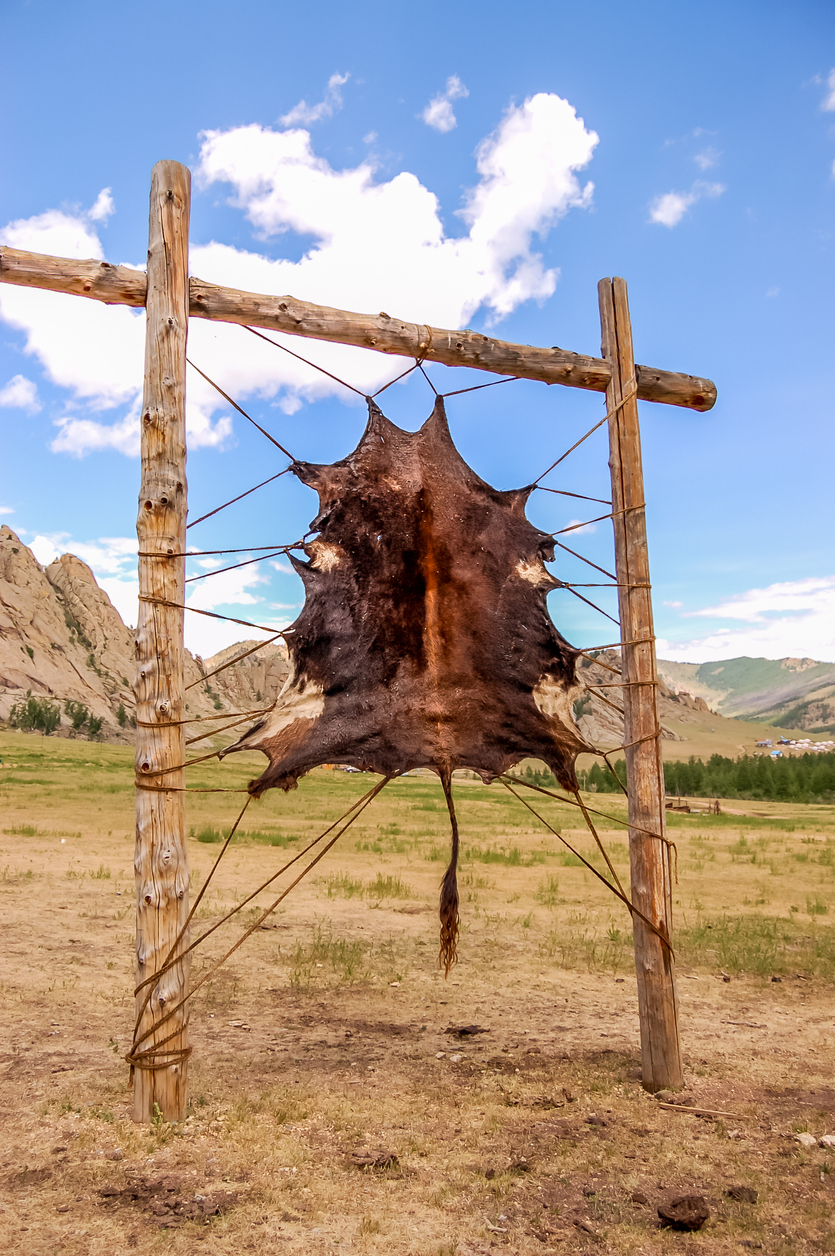
Throughout history, leather has been incredibly useful. Our ancestors have used it for everything from making clothing to making hinges for doors, from making holsters to making harnesses, and from shoes to saddles. Tough and resilient, leather is an incredibly useful material.
Many of these uses have been replaced by synthetic materials today in an effort to save money. While some of these materials work just as well as leather, they aren’t always as durable – nor, it is important to add, are these synthetic materials as easy for the do-it-yourselfer to work with.
In many cases, special equipment and molds are necessary – something that nobody is going to have available in their home.
Should we find ourselves in a situation where industry and the massive distribution system it is dependent on are unable to operate, such as in the wake of true TEOTWAWKI disaster, those synthetic products will most likely become unavailable.
When that happens, we’re going to be on our own. This means making our own products, probably out of leather. But just where will we get the leather from?
In times past, every hunter knew how to tan the hides they gained from hunting and turn them into useful leather and pelts.
While they may not tan every hide from every kill, especially if they were hunting for meat, it was common to save the hides for a time when they could take the time to tan them because leather was always useful, as well as being a good “cash crop” which could be sold. Fur pelts were an even better cash crop, with quality pelts able to garner a higher price at sale.
Professional tanneries were probably one of the earlier cottage industries due to the high amount of leather that was needed throughout history. Setting up a tannery really wouldn’t be all that difficult an operation; nor would expanding it as the market for finished leather increased.
Going back to our theoretical TEOTWAWKI event, it is unlikely that we would find any commercial tanneries available for us to make use of.
Therefore, if we needed products made of leather, we would most likely need to tan our own hides. Fortunately, although a time-consuming process, it is not all that complicated to do.
There are actually several methods used for tanning. Commercial tanning uses alum, which we are going to avoid as it may not be available. Instead, we are going to use brains as the oil from the brain is an old but reliable method of tanning.
1. Flesh the Hide
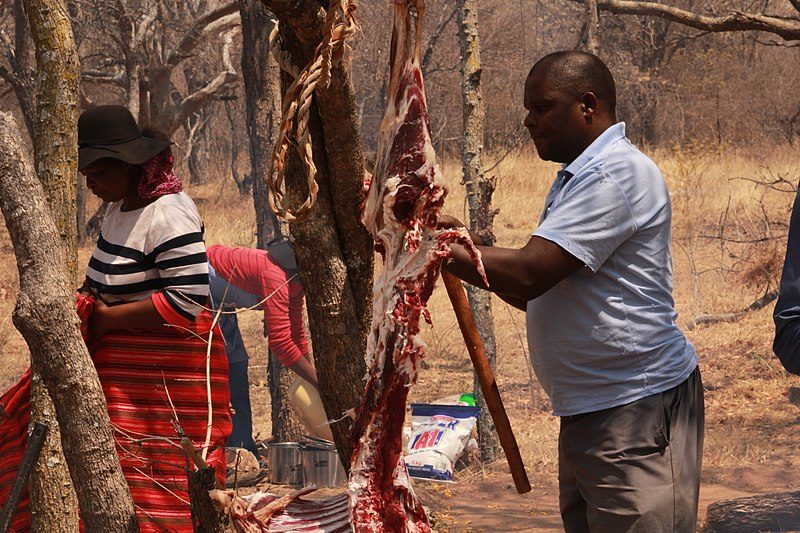
Before the hide can actually be tanned, it has to be fleshed. This means removing all the meat and fat from the inside, leaving behind only the skin itself.
This is usually done by placing it over a beam that has a clip to hold it in place and scraping the fat and flesh off with a knife. While a special knife, a “fleshing blade,” is available for doing this more efficiently, you can do the same work with any large fixed-blade knife by holding the knife perpendicular to the surface of the hide.
Fleshing should be done as soon as possible after skinning the animal. Decomposition starts immediately. The longer you wait to start tanning, the more the decomposition can damage the hide, making it likely that you will put your knife through it accidentally.
2. Wash the Hide
The hide then needs to be washed in order to remove dirt, blood, and other impurities. Using a large plastic trash can or storage bin, mix up clean water and natural soap to soak it in.
Scrub the hide, applying some elbow grease to remove as much dirt and blood from it as possible. Change the water frequently as it becomes dirty.
You will want to remove all the blood in this stage. This is the real indicator that you have washed it thoroughly: when you can tell by looking at the hide and the water that you have removed all the blood.
3. Dry the Hide
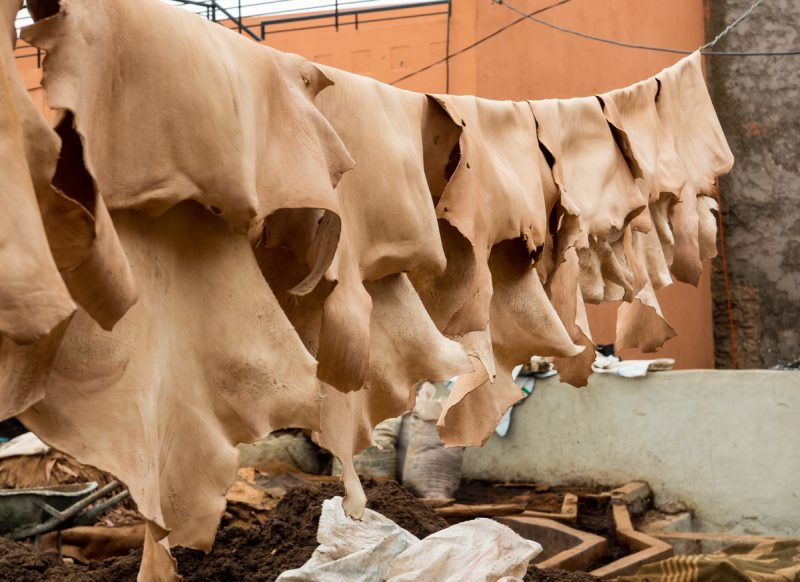
At this point, the hide needs to be stretched to dry. Poke a series of holes around the perimeter and tie it to a strong open frame, stretching it as you go. It should not just be draped and held in place but should actually be stretched to keep it from shrinking. The better a job you do of stretching it, the larger your finished piece of leather will be.
Some people stretch hides over walls by tacking them up. The problem with this is that it impedes air circulation. So, if you are going to do this, you need to attach some sort of a frame to the wall to tack the hide to so that it will have air circulating around the back side as well.
Leave it to stretch until it is fully dry. This can take as long as a week, depending on the humidity where you are working.
4. De-Hair the Hide
If you are making leather rather than a fur pelt, you are going to want to remove the hair at this point. Take it back to the fleshing beam and clip it in place, hair side up.
Use a knife with a rounded blade to scrape off the hair, being careful not to cut the hide itself in the process. To avoid cutting the hide, you are actually scraping the hair off, much like the fleshing process earlier.
With long-hair hides, it is often easier to de-hair them if the hair is trimmed first. The hair will come off easier if you work against the grain, so attach it to the post that way. Take extra care where the hide is thinner, such as around the belly.
5. Brain the Hide
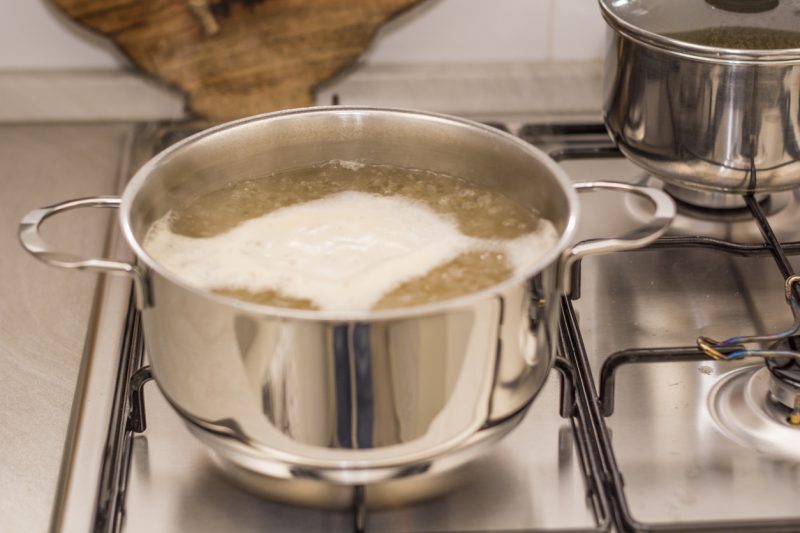
The oils in the animal’s brain are excellent tanning chemicals, and it just so happens that the brain of the animal will provide just the right amount of these chemicals for the tanning process.
Cook the brain in water until it breaks down fully. If you have a blender available, run the cooked brain and water through the blender to make a smooth, homogenous liquid.
Wash the hide once more and then wring the water out of it. Pressing it between two towels works excellently for this as the towels will help draw water out. You have to have it wrung out very thoroughly or the water will repel the oils from the cooked brain.
Lay the hide over the pole again or on a table. Rub the brain mixture into it, taking your time to do it thoroughly. Make sure that you cover every inch, as any part that is missed will not end up properly preserved and will most likely not last.
Roll the brained hide up and wrap it in a large plastic bag. Refrigerate for 24 hours to allow the oils from the brain to soak in. If you don’t have room in the refrigerator, use an ice chest and some ice to keep the hide cool so that it will not decompose.
6. Soften the Hide
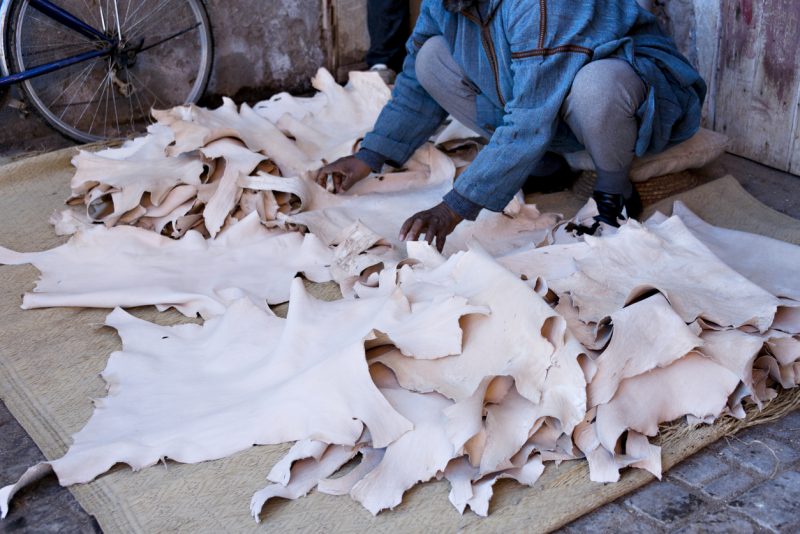
Once the brain oils have had time to soak in, the hide should be removed, stretched back out, and as much of the excess brain mixture removed as possible. At this point, it will be stiff and hard. It needs to be softened. There are several methods available for doing this:
- Two people taking opposite edges of the hide and pulling on it
- Using a heavy stick or “hide breaker” and rubbing the tool over the surface
- Two people using a heavy rope and pulling it back and forth across the surface of the hide
- Pulling the hide back and forth over a pole, like a fence rail
7. Smoke the Hide
Once the hide is soft and pliable, allow it to dry fully. Then, sew it loosely to form a bag with one end closed. Invert this over a stick teepee frame to hold it open with the closed end pointed up. Build a small smoky fire underneath it and allow the smoke to rise into the hide bag.
Smoke it in this manner for about an hour, adding wet wood chips as necessary to continue producing smoke. Once that is over, turn the bag inside-out and repeat the process for another hour so that both sides are fully smoked.
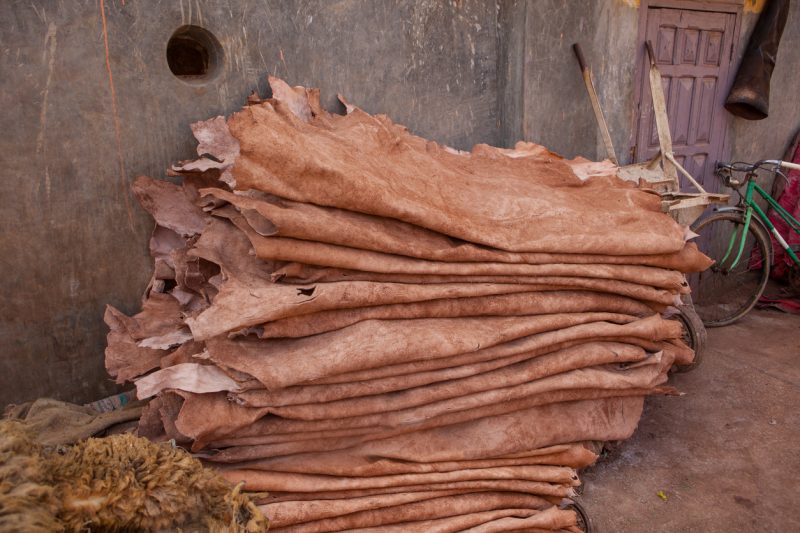
Your hide is now tanned and ready for use!
